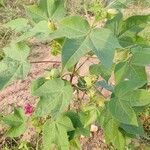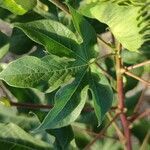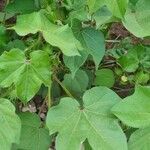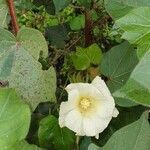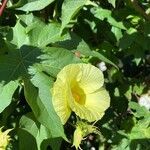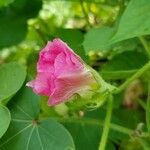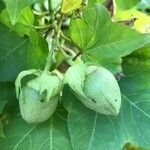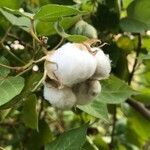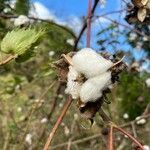| Therapeutic use
|
Abortifacient agents (bark), Anti-bacterial agents (bark), Galactogogues (bark), Hemostasis (bark), Menstruation-inducing agents (bark), Amenorrhea (flower), Anti-bacterial agents (flower), Burns (flower), Diuretics (flower), Dysmenorrhea (flower), Galactogogues (flower), Hallucinations (flower), Hypochondriasis (flower), Jaundice (flower), Lactation disorders (flower), Liver diseases (flower), Menstruation-inducing agents (flower), Scabies (flower), Thirst (flower), Urination disorders (flower), Vaginal discharge (flower), Abscess (fruit), Ear diseases (fruit), Jaundice (fruit), Menstruation disturbances (fruit), Oral ulcer (fruit), Vaginal diseases (fruit), Abdominal pain (leaf), Anemia (leaf), Anti-bacterial agents (leaf), Antidotes (leaf), Antipyretics (leaf), Diarrhea (leaf), Diuretics (leaf), Dysentery (leaf), Earache (leaf), Headache (leaf), Hematinics (leaf), Intestinal diseases, parasitic (leaf), Laxatives (leaf), Malaria (leaf), Nervous system diseases (leaf), Pain (leaf), Scorpion stings (leaf), Snake bites (leaf), Urination disorders (leaf), Rheumatoid arthritis (leaf), Abortifacient agents (root), Abscess (root), Amenorrhea (root), Diarrhea (root), Diuretics (root), Dysentery (root), Dysmenorrhea (root), Dyspepsia (root), Ear diseases (root), Emollients (root), Fever (root), Flatulence (root), Galactogogues (root), Insecticides (root), Jaundice (root), Leprosy (root), Leukorrhea (root), Menstruation disturbances (root), Menstruation-inducing agents (root), Scabies (root), Skin diseases (root), Urination disorders (root), Uterine diseases (root), Abortifacient agents (seed), Abscess (seed), Analgesics (seed), Antifungal agents (seed), Antipyretics (seed), Antirheumatic agents (seed), Aphrodisiacs (seed), Asthenia (seed), Asthma (seed), Bronchitis (seed), Contraceptive agents (seed), Cough (seed), Dementia (seed), Demulcents (seed), Diabetes mellitus (seed), Diuretics (seed), Dizziness (seed), Dysentery (seed), Dyspepsia (seed), Earache (seed), Disorder of ejaculation (seed), Emollients (seed), Epilepsy (seed), Expectorants (seed), Fatigue (seed), Fever (seed), Galactogogues (seed), Gout (seed), Headache (seed), Hemorrhage (seed), Hypokalemia (seed), Inflammation (seed), Insecticides (seed), Lactation disorders (seed), Laxatives (seed), Menstruation disturbances (seed), Nervous system diseases (seed), Obesity (seed), Orchitis (seed), Pain (seed), Scabies (seed), Skin diseases (seed), Snake bites (seed), Syncope (seed), Tinnitus (seed), Toothache (seed), Tuberculosis, lymph node (seed), Tympanic membrane (seed), Ulcer (seed), Urination disorders (seed), Wound healing (seed), Wounds and injuries (seed), Delusions (seed), Sexual debility (seed), Abortifacient (unspecified), Absorbent (unspecified), Headache (unspecified), Bite(Snake) (unspecified), Brain (unspecified), Demulcent (unspecified), Dysentery (unspecified), Emmenagogue (unspecified), Expectorant (unspecified), Fever (unspecified), Fibroma(Uterus) (unspecified), Hemorrhage (unspecified), Hemostat (unspecified), Lactogogue (unspecified), Laxative (unspecified), Liniment (unspecified), Malaria (unspecified), Nervine (unspecified), Neuralgia (unspecified), Oxytoxic (unspecified), Parturition (unspecified), Pharyngitis (unspecified), Scabies (unspecified), Soap (unspecified), Sore (unspecified), Surgical-Dressing (unspecified), Tumor (unspecified), Vasoconstrictor (unspecified), Aphrodisiac (unspecified), Vulnerary (unspecified), Antiseptic (unspecified), Emollient (unspecified), Lactagogue (unspecified), Leprosy (unspecified), Skin (unspecified), Scorpion (unspecified), Contraceptive agents (unspecified), Diarrhea (unspecified), Diuretics (unspecified), Galactogogues (unspecified), Leukorrhea (unspecified), Menstruation disturbances (unspecified)
|

